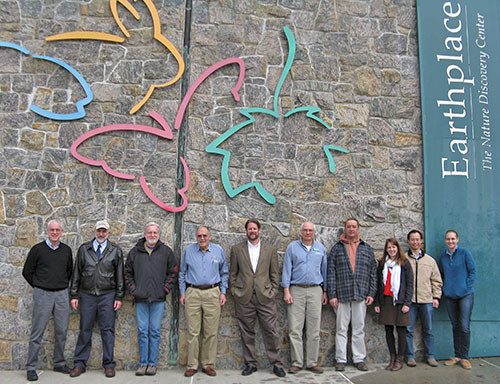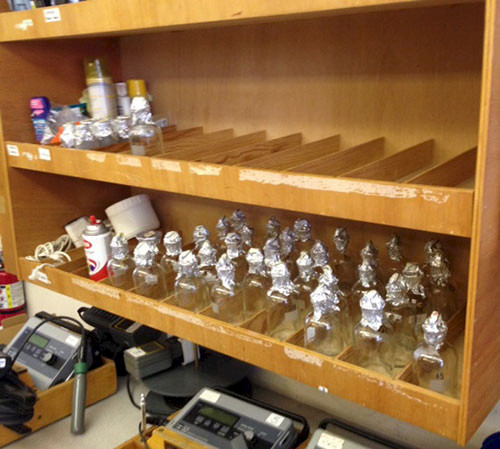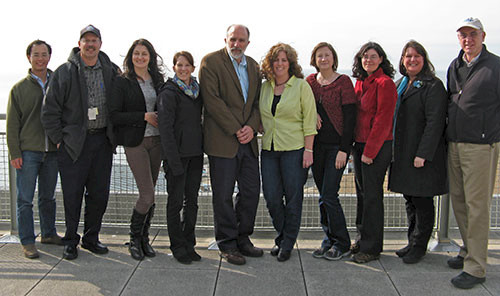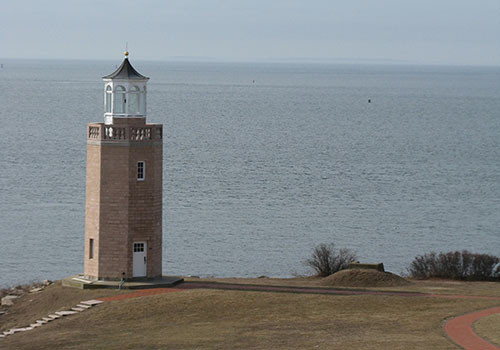Long Island Sound 'listening tour' to initiate environmental report cards: Part 1
Bill Dennison ·Bill Nuttle, Caroline Wicks, Anthony Kung and I circumnavigated Long Island Sound, crossing it at both ends (over the Robert F. Kennedy Memorial Bridge on the western end and aboard the Cross Sound Ferry on the eastern end), and drove through most of the Connecticut coast and the length of Long Island. We visited five different groups of scientists, resource managers and local conservation groups in Connecticut and Long Island, New York in March (10-13). At each location, we explained who we were and what we plan to do and learned from the attendees what they knew and what data is available. We found it very useful to kick off this project in this manner. Our plan is to produce three environmental report cards: 1) Long Island Sound report card, encompassing the main body of the sound from New York City's East River to the 'Race' separating Long Island Sound from Block Island Sound, 2) Norwalk Harbor and Norwalk River in Connecticut, and 3) Hempstead Bay on Long Island. In order to produce these three report cards, we will be working with a large number of different partners, hence this initial 'listening tour' to meet key partners and determine other partners to approach.
Our first stop was at Earthplace -- The Nature Discovery Center in Westport, Connecticut. We found a bustling facility staffed by an impressive array of all ages; very young people to seniors. Earthplace has a nursery school on site, forested walking trails, and an active public engagement program. Earthplace supports an active program of citizen scientists sampling in Norwalk River and Norwalk Harbor, complete with a certified water quality laboratory. We met the Earthplace Director, Tony McDowell, and he told us about some of the excellent programs conducted at Earthplace, which capitalizes on their setting in a large tract of forested land. We met with the Harbor Watch group at Earthplace. Harbor Watch is an impressive citizen science program. Dick Harris, a retired oil company executive, has been sampling Norwalk Harbor for 26 years and along with Pete Fabroni from Earthplace has built a certified water quality laboratory, mentored dozens of high school and college interns and created strategic partnerships with various agencies and fishers. In addition to Dick and Pete, there are two young people doing the water quality sampling and analyses, Nikki Cantatore and Josh Cooper. They have an active group of citizen scientists who collect and analyze water quality samples. One of their Harbor Watch volunteers constructed beautiful wooden shelves and boxes for the sampling gear. A key partner in Harbor Watch, Norm Bloom who runs a shellfish business and provides laboratory space for Harbor Watch on Norwalk Harbor also attended the meeting. He sponsors a fund raiser they call 'Cocktails and Clams', which is (understandably) a popular event. Gary Wikfors from the NOAA lab in Milford, CT also attended. When Dick and Pete were talking about the algal blooms that turned the water a brown color, Gary volunteered to provide some taxonomic assistance with species identifications, so we were glad that our workshop helped facilitate a productive collaboration. Tripp Killin, the chair of the Long Island Funders Network also attended.


Our second stop was at the Long Island Sound Study (LISS) office in Stamford, CT. Mark Tedesco, Long Island Sound Study Director lined up a couple of his staff (Jason Krumholz and Robert Burg) to talk with us, and also organized a conference call with EPA staff (Leah O'Neill, Lynne Hamjian, Todd Borci) based at the Environmental Protection Agency's Region 1 headquarters near Boston, MA. The Region 1 staff told us about their report cards for the Charles and Mystic Rivers in Boston, Massachusetts which were focused in bacterial contamination. Mark's staff gave us the big picture for the Long Island Sound monitoring program and the various data they use to produce the 'State of the Sound' report, with 26 indicators being tracked. We learned about the 'sewersheds'--like watersheds for the underground movement of sewage to its treatment facilities and point of discharge, the gradient in residence time of Long Island Sound waters from 60-80 days in the western Sound to 11 days in the eastern Sound and the challenge of subdividing the Sound into reporting regions. The LISS staff also told us that they are looking to release their latest Comprehensive Conservation Management Plan later this year. The data available for a Long Island Sound report card include water quality data (dissolved oxygen, water clarity, chlorophyll, total nitrogen and total phosphorus), fish trawl survey data, seagrass area in the eastern Sound, and bacterial contamination.

The third stop on the agenda was the University of Connecticut, Avery Point campus in Groton, CT. We had spectacular views from the UConn conference room at the mouth of the Thames estuary (note, this Thames River is pronounced phonetically (Thames rhymes with blames) rather than the British pronunciation (Thames rhymes with stems). We met with Jamie Vaudrey, a junior faculty member who works with various regional groups to produce nutrient models of their estuaries, and Jim O'Donnell, a physical oceanographer who studies water circulation in the Sound. We also met with several Connecticut Department of Energy and Environmental Protection (DEEP) staff who are involved in the monitoring and management of Long Island Sound: Mark Parker, Katie O'Brien-Clayton, Corinne Fitting, and Kelly Streich. Julie Rose, now with NOAA but formally with the Long Island Sound Study, also contributed. Prior to this meeting, we had breakfast with a Connecticut DEEP scientist very familiar with Long Island Sound, Penny Howell. With all of these experts, we discussed the rationale for dividing the Sound into reporting regions (bathymetry and circulation), the improving water clarity, limited seagrass recovery, lobster die-off, fisheries issues, and worked with them to develop a conceptual diagram of Long Island Sound.


About the author
Bill Dennison

Dr. Bill Dennison is a Professor of Marine Science and Vice President for Science Application at the University of Maryland Center for Environmental Science.